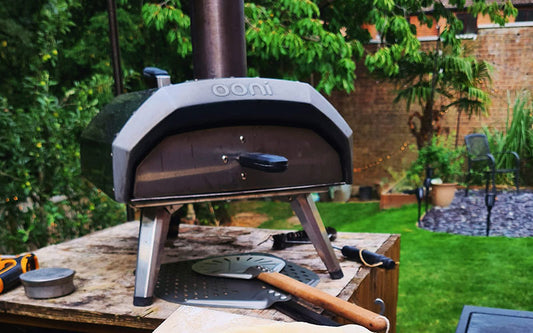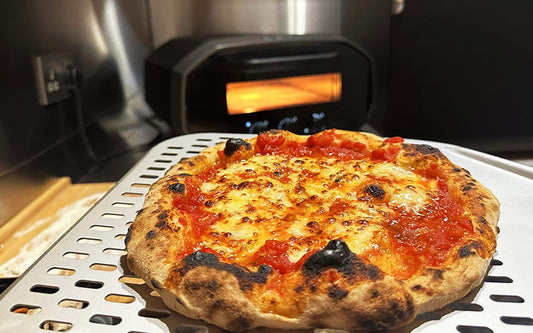So… it’s a Friday night, and I’m all set to whip up a killer homemade pizza. I grab that ball of pizza dough from the fridge, but hold up – can I actually use pizza dough straight from the fridge? Well, that, dear readers, is the burning question we’re tackling today.
Using cold pizza dough right out of the fridge might sound tempting for a quick fix, but trust me, it’s a shortcut to a pizza that’s not living up to its full potential. When you slide that chilled dough into a hot oven, it simply won’t cooperate. The result? A crust that’s doughy in the middle and slightly charred on the outside.
That’s why it’s crucial to let your dough chill out at room temperature for at least an hour before baking it. Keen to learn more about pizza dough refrigeration and how it impacts the crust? Keep reading!
A Lowdown on Fermentation
Fermentation is a crucial step in the pizza dough game. Here’s how it works: when you mix yeast with sugar in your dough, it goes into action mode. Without oxygen around, yeast converts that sugar into carbon dioxide and alcohol. This magical reaction makes your dough rise, creating those highly sought-after fluffy, airy pockets.

Now, about that ideal duration for fermentation. A short rise can yield decent results, but it won’t take your pizza to the next level in terms of flavor and texture. The sweet spot? At least 24 hours in the fridge. If you can let it chill for up to 72 hours, even better!
✅Next Read: From Dough to Delight: A Review of the Ooni Volt 12 Pizza Oven
During the extended proofing period, the yeast and enzymes in the dough have more time to work their magic. They break down complex starches and proteins into simpler forms, which not only intensifies flavor but also enhances the dough’s extensibility. Translation? It’s easier to stretch that dough into a beautiful, thin crust.

Longer fermentation also gives your dough a chance to develop deeper, more complex flavors. Think of it like a fine wine or a perfectly aged cheese – time allows the dough to develop its character, resulting in a pizza with a richer, more nuanced taste profile.
Advantages of Refrigerating the Pizza Dough
Yes, yes, instant doughs are convenient, but when have they ever tasted out of the world? Hint: never. Good pizza takes time. Period. Below, I have summarized the perks of letting that dough relax in the fridge for as long as you can:
1. Enhanced Flavor Profile
Longer fermentation isn’t just a fancy term; it’s the key to unlocking flavor dimensions you didn’t know existed. This extended proofing time allows yeast and enzymes to transform complex compounds into a symphony of tastes.

Pro tip 1: Experiment with different flours and hydration levels during your dough preparation, along with shorter/longer fermentation periods to fine-tune your dough recipe.
2. The Chew Factor
The slow, cool rise provides ample time for gluten development – that magical protein responsible for that oh-so-satisfying chew. But there’s more to it – cold fermentation traps countless tiny air bubbles within your dough. As a result, the crust turns out to be crispy on the outside, tender on the inside, and with a delightful bubbly structure that’s pure pizza perfection.

Tip 2: Try using a blend of different flours (like bread flour and a bit of semolina flour) for an exciting texture twist.
3. The Convenience Factor
Have you ever had a sudden pizza hankering hit you, but you weren’t in the mood to make a dough from scratch? Preparing your dough in advance, keep it chilled; you’ve got a slice of convenience right in your fridge (for up to 3 days, even 5 for higher hydration doughs)
Best Practices for Using Pizza Dough Straight from the Fridge
Allow the Dough to Come to Room Temperature
First things first, don’t rush – you’ve got to let your refrigerated dough sit at room temp before you start stretching it. No shortcuts here. Allowing the dough to come to room temp makes it more flexible and way easier to handle. How long? Well, it depends on your room’s warmth and the dough size, but it generally takes anywhere between 1-2 hours.
✅Our Recommended: Baking Perfection: The Best Indoor Pizza Ovens of 2024
But how long can you keep it sitting outside? In my experience, for yeast-made dough, it’s a four-hour cap, and for sourdough, you’ve got a bit more wiggle room – six hours max.
Shaping the Dough
Cold dough can easily tear apart while stretching and shaping, which is the last thing you want. Plus, there’s a very real risk of the dough getting stuck to the peel due to condensation acting as a glue. I’d also advise using the backs of your hands to stretch for a smoother surface that won’t tear as easily.
✅Next Read: Best Pizza Dough Press for Beginners: Easy-to-Use and Affordable Options
Preheating the Oven
For pizzas, the hotter the oven, the better. For regular ovens, anywhere between 450-550 degrees F is what you should be aiming for. If you are using a pizza stone, you need to preheat that as well for a crispy, golden-brown crust. My standard kitchen oven takes 45 minutes to reach the desired temperature.
If you have a traditional wood-fired oven, it could take up to an hour to come to the right temperature. However, smaller wood-fired ovens take only around 15-20 minutes only.
For instance, my Ooni Karu 12 reaches 750 degrees in just 10 minutes if I use a gas burner. And if I’m using a combination of charcoal and wood pellets, it takes roughly 15 minutes to reach 930 F.
Is Your Pizza Crust Past Its Prime? Here’s How to Know..
Sometimes, life gets in the way, and that pizza dough you stashed in the fridge might be a bit forgotten. Here are some telltale signs that it’s been sitting around for too long:
- The Smell Test: Give it a good whiff. If the dough smells overly sour or off-putting, it’s probably past its prime. Fresh dough should have a mildly yeasty, pleasant aroma.
- Visual Clues: Check for any unusual discoloration or the presence of grayish or pinkish spots. These are signs of spoilage, and it’s best to steer clear. Also, look out for the signs of the freezer burns if you are using frozen dough. You can still bake it, but the texture won’t be up to the mark.
- Changed Surface Texture: If the dough feels overly sticky or slimy or develops a slimy film on its surface, that’s a red flag. Fresh dough should be smooth and slightly tacky but not excessively so.
Like all the best things in life, pizza dough won’t last forever. Trust your senses, and when in doubt, it’s better to err on the side of caution and grab a fresh batch for your pizza night.
| Test/Aspect | Description/Indication |
|---|---|
| The Smell Test |
Fresh dough: Mildly yeasty, pleasant aroma. Old dough: Overly sour or off-putting smell. |
| Visual Clues |
Fresh dough: Even color. Old dough: Unusual discoloration, grayish or pinkish spots. Freezer burns for frozen dough affect texture. |
| Changed Surface Texture |
Fresh dough: Smooth, slightly tacky. Old dough: Overly sticky, slimy, or has a slimy film. |
Debunking the Most Common Pizza Dough Myths
Okay, now let’s get real about some pizza dough myths that have been floating around like cheesy rumors. These are things I’ve mostly heard from the unpredictable realm of the internet, and it’s high time we set the record straight.
1. Cold Dough = soggy crust? Umm, true, to an extent!
Baking cold pizza dough straight from the fridge can indeed lead to a soggy crust if you’re not careful. One major reason for this sogginess is that the dough doesn’t get cooked all the way through.
To dodge this soggy fate, preheat your oven to the highest temp it can reach, along with the baking stone. This initial blast of heat is key to getting that crust crispy.
Moreover, if the dough is too cold, it can potentially disrupt the oven’s thermal balance, which is essential for achieving a quick, perfect bake.
2. Slow Rise, Less Rise? Not Exactly.
Now, some say cold dough won’t rise as much as dough left at room temp. Here’s what I’ve found: it rises at its own pace, but the flavor is where the real action happens. A slower rise gives helps the dough develop a deeper, nuttier flavor and a light, pillowy texture.
3. Fear of Over-fermentation
Over-fermentation is less likely to happen in the cold. That’s because lower temps slow things down, so your dough can relax and develop its flavor without going sour. Over-fermentation usually happens when you leave the dough sitting at room temperature for far too long. Not the other way around.
The Bottom Line
To sum up, the answer to “Can I use pizza dough straight from the fridge?” is a clear no from me, at least. If it’s too hot outside, take the dough out at least 20-30 minutes before baking. Room-temperature dough is the way to go when it comes to pizza. As simple as that.
Have any more questions about pizza dough fermentation? Let me hear it!




